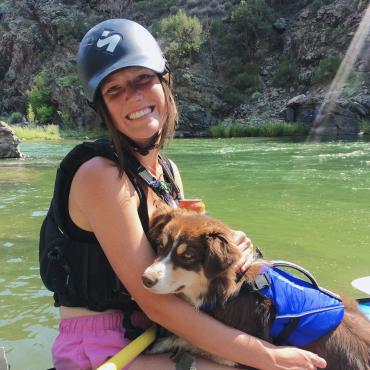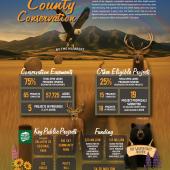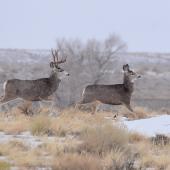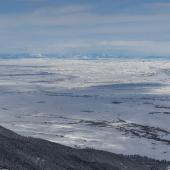Tipping the Scales
How fishing-license fees pay for conservation.
Every year, anglers pay a seasonal fee to Montana Fish, Wildlife & Parks (FWP) for a license to fish the state’s rivers and lakes. These licenses aid in tracking angling pressure, as well as funding various programs and projects dedicated to conservation, habitat restoration, public-access enhancement, and more. Here’s a closer look at where the money goes when you purchase a license, and why the fees are a crucial part of conservation efforts here in Montana.
This year, a full-season adult fishing license costs $31 for Montana residents, including the required conservation stamp, and $117.50 for nonresidents. In 2023, 111,256 of these licenses were purchased by residents, and 42,617 were purchased by nonresidents. Additionally, nonresidents bought 145,575 one-day licenses and 58,754 five-day licenses. All said, that’s a lot of fishing demand to keep up with (the state records about 3.5 million angler-days every year), but also a lot of money generated from license sales.
The revenue from fishing-license sales in Montana is indispensable for the preservation and enhancement of our state’s aquatic resources.
The money—about $55 million a year—makes up approximately 80 percent of FWP’s total funding. The fisheries program receives roughly 30 percent of that. In 2021, that was just over $19 million. This year, the program has requested a budget increase to $23 million, to cover increased costs due to inflation, personnel needs, and equipment improvements.
Broken down further, the fisheries funds are divided into four bureaus: hatchery, aquatic invasive species (AIS), management, and habitat.
Funding for the Hatchery Bureau supports 12 hatcheries that stock 35 million fish annually into Montana lakes and manage fish populations in 750 bodies of water across the state. 16 different species of fish are raised in these hatcheries, including walleye, trout, bass, pike, salmon, and grayling.
This year, a full-season adult fishing license costs $31 for Montana residents, including the required conservation stamp, and $117.50 for nonresidents.
The AIS Bureau sets up and performs watercraft inspections across the state, and works with both state and federal organizations, native tribes, conservation districts, and the public to implement productive AIS programs.
Meanwhile, the Management Bureau coordinates conservation efforts for native fish species and waterbodies across the state’s seven management regions and supports the development of fishing regulations that bridge sport-fishing’s demands with preserving aquatic resources. Recently, the management staff developed a protocol to address drought concerns, which ensures that instream flows—the amount of water needed to sustain fish populations and aquatic ecosystems—are maintained during dry conditions.
Finally, as its name states, the Habitat Bureau runs programs that support fish habitat—such as community ponds, pollution issues, chemical fish-removals, stream-restoration projects, and algae-bloom monitoring. The Bureau works hand-in-hand with the Future Fisheries Improvement Program, which distributes about $1.4 million every year for projects—both privately and publicly driven—that enhance wild-fish habitat and populations. These include initiatives such as enhancing riparian areas through willow-planting to projects that control invasive weeds at Fishing Access Sites.
The revenue from fishing-license sales in Montana is indispensable for the preservation and enhancement of our state’s aquatic resources, not to mention the $1.3 billion overall impact of fishing on the Montana economy. Through careful allocation, these funds support a myriad of programs and projects that ensure sustainable fisheries, enrich angler experiences, and bolster the state’s economy. As an angler, you can take pride in knowing that your contributions directly affect the conservation of our Treasure State.













